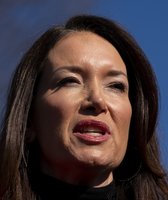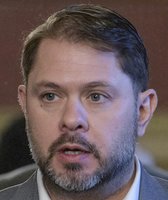Stand up for the facts!
Our only agenda is to publish the truth so you can be an informed participant in democracy.
We need your help.
I would like to contribute
Did GOP U.S. Senate candidate Tommy Thompson end welfare in Wisconsin?
Our Sources
Tommy Thompson Senate candidacy announcement video, Dec. 1, 2011
Email interview, Tommy Thompson campaign spokesman Darrin Schmitz, Dec. 5, 2011
Email interview, Wisconsin Department of Health Services spokeswoman Stephanie Smiley, Dec. 6, 2011
Email interview, Wisconsin Department of Children and Family Services spokeswoman Sara Buschman, Dec. 7, 2011
PolitiFact.com, "Thompson was a leader in welfare reform," June 1, 2007
Tommy Thompson for President 2008 Facebook page
New York University professor of politics Lawrence Mead,"Statecraft: The politics of welfare reform in Wisconsin," February 1999
Interview, New York University professor of politics Lawrence Mead, Dec. 6, 2011
Wisconsin Historical Society, "W-2 -- Wisconsin Works"
Wisconsin Historical Society, "Tommy Thompson and the conservative revolution"
Wisconsin Department of Health Services, "FoodShare Wisconsin program at a glance -- October 2011"
Wisconsin Department of Children and Family Services, "Wisconsin Works (W-2) critical indicators," October 2011
U.S. Department of Health and Human Services, "A brief history of the AFDC program"
Interview and email interview, Wisconsin Council on Children and Families research director Jon Peacock, Dec. 5 and 6, 2011
National Journal, "Thompson announces Senate plans," Sept. 19, 2011
Governing, "Taking stock," February 2010
Wisconsin Legislative Fiscal Bureau, "Wisconsin Works (W-2) and other economic support programs," January 2011
Email interview, Tommy Thompson campaign spokesman Darrin Schmitz, Dec. 5, 2011
Email interview, Wisconsin Department of Health Services spokeswoman Stephanie Smiley, Dec. 6, 2011
Email interview, Wisconsin Department of Children and Family Services spokeswoman Sara Buschman, Dec. 7, 2011
PolitiFact.com, "Thompson was a leader in welfare reform," June 1, 2007
Tommy Thompson for President 2008 Facebook page
New York University professor of politics Lawrence Mead,"Statecraft: The politics of welfare reform in Wisconsin," February 1999
Interview, New York University professor of politics Lawrence Mead, Dec. 6, 2011
Wisconsin Historical Society, "W-2 -- Wisconsin Works"
Wisconsin Historical Society, "Tommy Thompson and the conservative revolution"
Wisconsin Department of Health Services, "FoodShare Wisconsin program at a glance -- October 2011"
Wisconsin Department of Children and Family Services, "Wisconsin Works (W-2) critical indicators," October 2011
U.S. Department of Health and Human Services, "A brief history of the AFDC program"
Interview and email interview, Wisconsin Council on Children and Families research director Jon Peacock, Dec. 5 and 6, 2011
National Journal, "Thompson announces Senate plans," Sept. 19, 2011
Governing, "Taking stock," February 2010
Wisconsin Legislative Fiscal Bureau, "Wisconsin Works (W-2) and other economic support programs," January 2011
Browse the Truth-O-Meter
More by Tom Kertscher
slide 4 to 6 of 15
Did GOP U.S. Senate candidate Tommy Thompson end welfare in Wisconsin?
Support independent fact-checking.
Become a member!
In a world of wild talk and fake news, help us stand up for the facts.
































